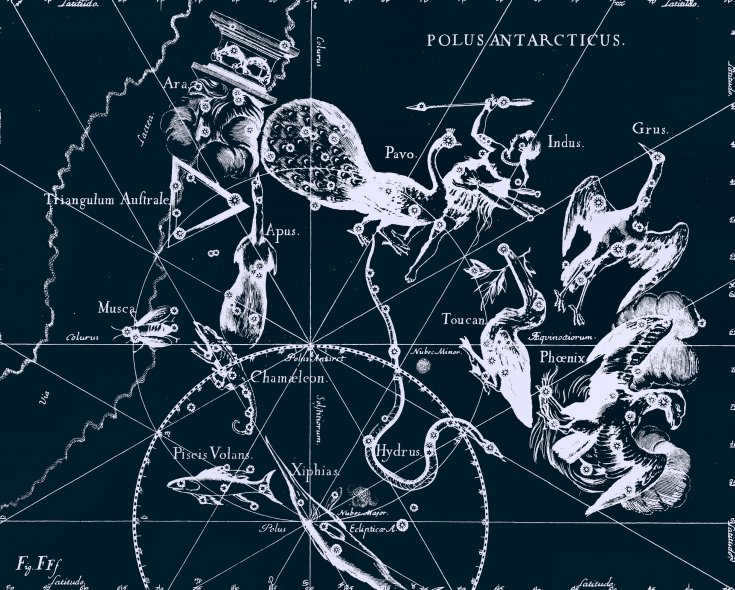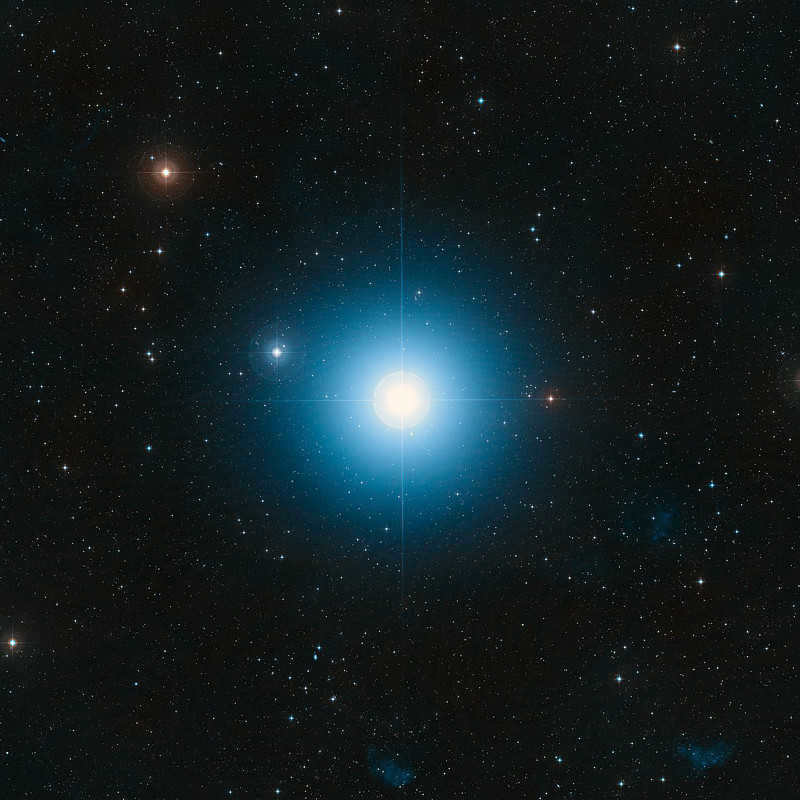
Observing Fomalgaut in Moscow provides a unique opportunity to witness a star that is rarely visible in the middle northern latitudes. As such, those passionate about astronomy in Russia who have had the chance to see this star firsthand may have experienced a truly extraordinary celestial event and a glimpse into the vastness of the universe.
What type of star is Fomalgaut?
Fomalgaut is a first magnitude sidereal star, standing out as one of the most brilliant stars in the sky. It holds the 18th position in terms of brightness among all the stars visible from Earth. This star plays a crucial role in navigation due to its significant distance from other prominent stars. Fomalgaut may appear isolated, but it is not truly alone, despite the fact that its closest bright neighbor, Ahernar (alpha Eridanus), lies even deeper in the southern hemisphere and remains almost invisible in the northern hemisphere.
The challenges linked to observing this particular star from higher latitudes have enveloped it in a halo of romance and enigma – an enigmatic and elusive star that emerges above the horizon for a mere few minutes… naturally, it piques curiosity. I should note that during my time studying astronomy at the Moscow Planetarium – back in the early 80’s – my companions and I formed a musical ensemble, and the initial moniker we chose was “Fomalgaut”. However, it was later altered to “Alrado”, but the connection remains.
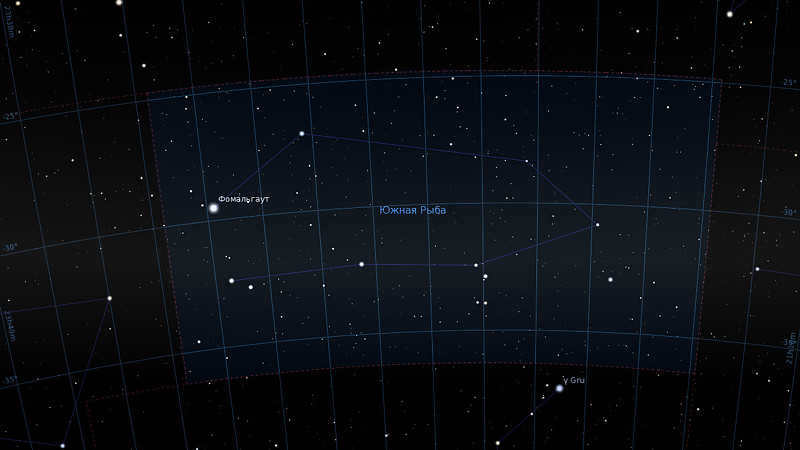
This particular celestial body leads a minor constellation. It goes by the name of the Southern Fish and does not enjoy widespread recognition. The night sky is adorned with numerous other fish-themed constellations – such as Pisces, Goldfish, Flying Fish, Whale, and Dolphin – but the Southern Fish stands apart primarily due to its prominent star. In terms of size and visibility, it is relatively small and unremarkable. Furthermore, despite the fact that this constellation is entirely visible in regions located below 54 degrees north latitude, observing its fainter stars near the horizon proves to be quite challenging. The air in that area is dense and laden with dust, allowing only the luminosity of Fomalgaut to permeate through.
In the meantime, Fomalgaut stands as one of the stars closest to us. With a mere 25 light-years separating it from the Sun, it is a noteworthy benchmark on the interstellar distance scale. This proximity has granted astronomers ample opportunity to extensively study Fomalgaut, resulting in a wealth of knowledge that surpasses that of many other stars, even those that shine brighter.
In contrast to our Sun, Fomalgaut boasts a slightly larger size, greater mass, and increased brightness. Its temperature exceeds that of the Sun by a staggering three thousand degrees, lending the star a white, perhaps even bluish-white, hue rather than the familiar yellow of daytime. In terms of age, Fomalgaut can be likened to a teenager, having already lived approximately 200 million years out of its projected billion-year lifespan. In comparison, the Sun resembles an individual in the pre-retirement stage of life, with two-thirds of its journey already behind it.
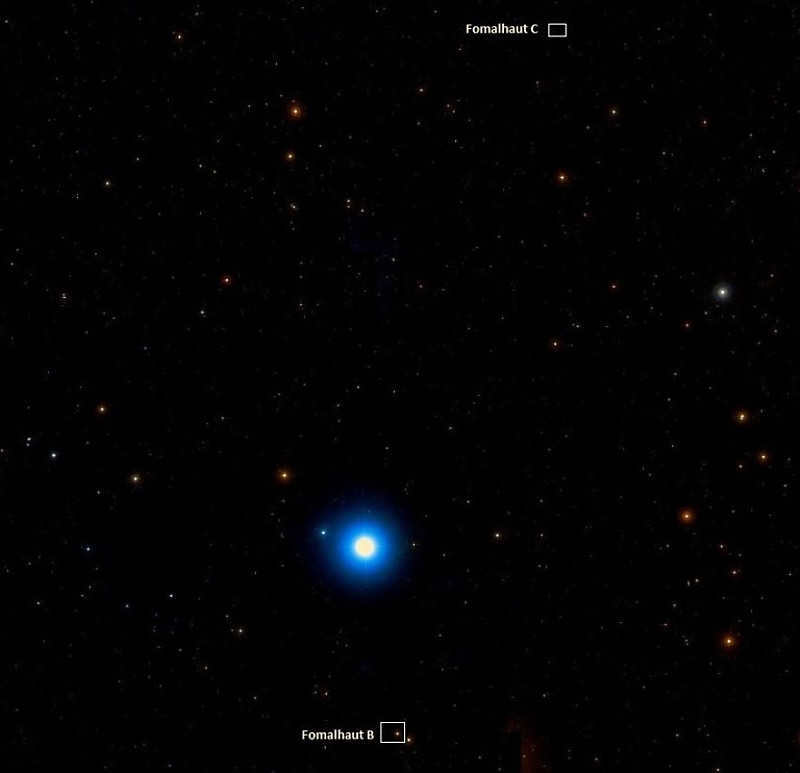
Although the orange Sun of Fomalgaut B might appear comical to the imaginary beings inhabiting one of its orbiting planets – akin to our Moon with its lunar seas, or dark spots – it would still be significantly brighter.
Furthermore, during the night sky of this particular planet, another luminous object would illuminate the surroundings – shining six times brighter than Venus – and that is the very same star, Fomalgaut. From a distance of one light year, it would still be visible as an incredibly radiant star.
Around a different star, LP 876-10 (Fomalgaut C), a belt comprising of icy blocks has been discovered, resembling the Oort cloud encircling our entire solar system.
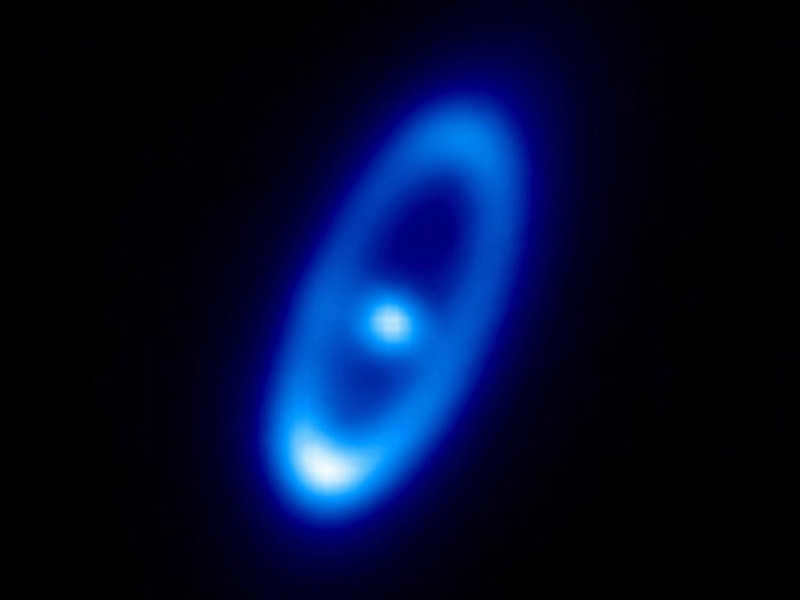
The primary star in this system, known as Fomalhaut A, is surrounded by a rather luminous dust disk that can even be seen from Earth with advanced telescopes. This disk is believed to be the birthplace of future planets, making it a fascinating subject of study for astronomers. In fact, there have been indications that some planets may have already formed within this system.
However, in 2020, the existence of all three potential planets in the Fomalhaut A system was disproven. This was undoubtedly a disappointment for the scientific community, especially considering that a discovery announcement had been made a few years prior.
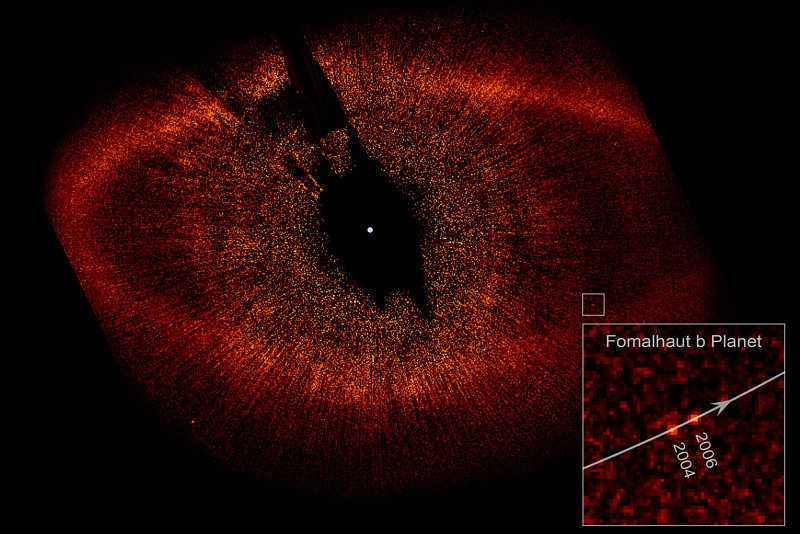
However, the situation is not entirely negative
Regarding a hypothetical planet, as recent discoveries suggest, astronomers have observed a highly dense dust cloud that gradually expanded in size and luminosity before eventually dissipating. Evidently, this cloud originated from the collision of two unfinished planets. During the early stages of the solar system, such occurrences were frequent. One notable collision between Gaia and Thea resulted in the formation of our present-day Earth and its neighboring celestial body, the Moon.
Nevertheless, in the Fomalgaut A system, loosely formed protoplanets continue to collide without giving rise to larger and more developed planets. Fomalgaut is still an exceptionally youthful star, and it is too early for it to bear any offspring.
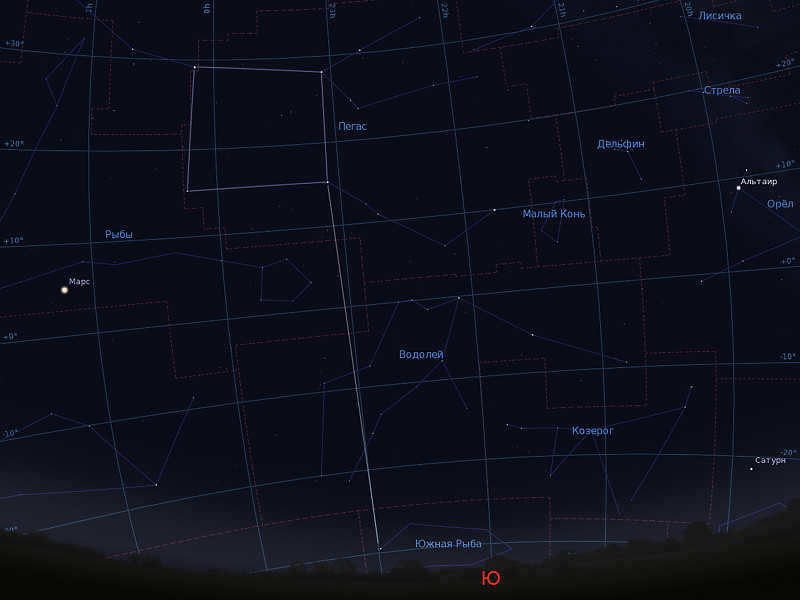
Furthermore, the Stellarium software – an open-source planetarium that works on various operating systems like Windows, macOS, Linux, iOS, and Android – is also at your disposal.
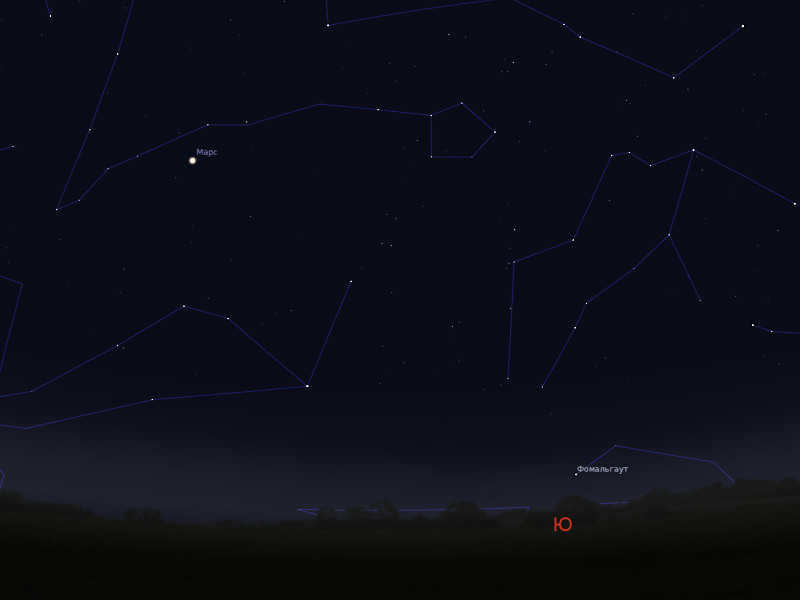
Music application
This instance it is not highly thematic – I have not yet composed anything about Fomalgaut. However, this melody is familiar with the celestial bodies and observing the stars. May it illuminate someone’s perusal.
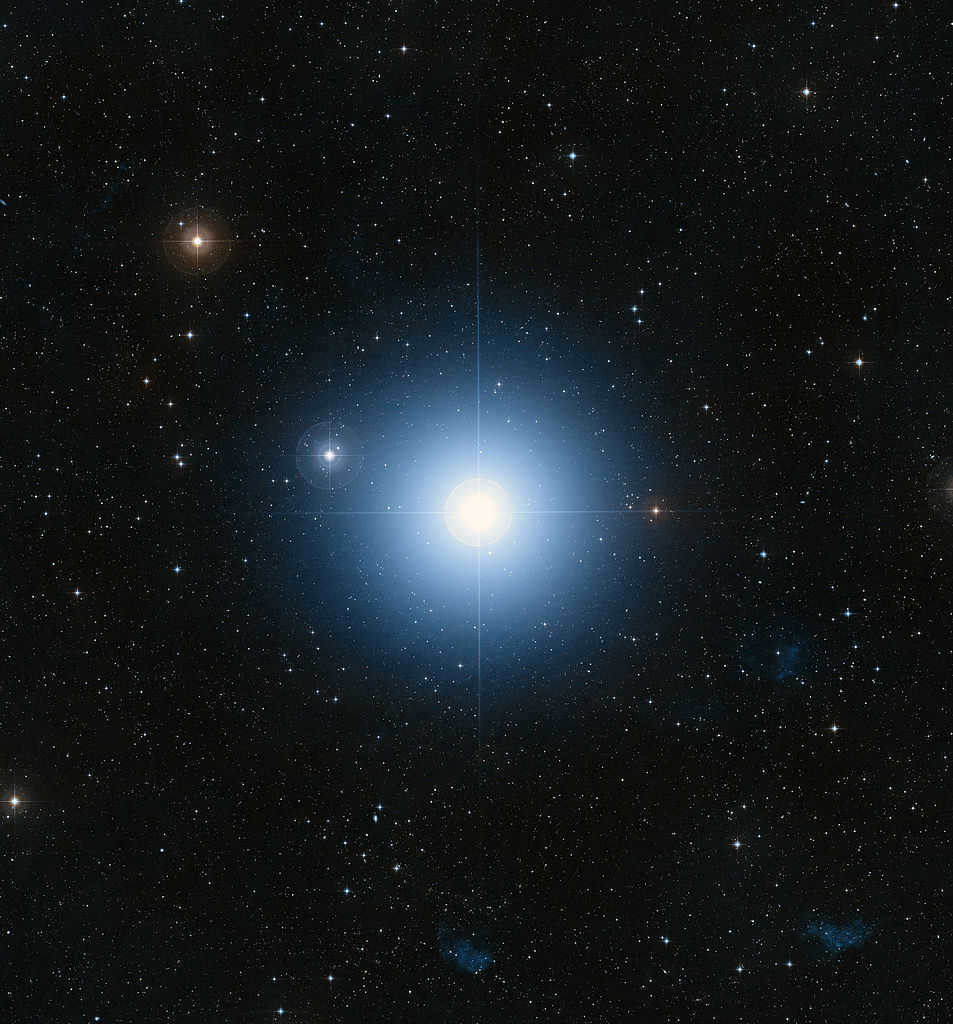
As we cast our gaze towards the heavens at night, a multitude of celestial bodies unveil themselves, enticing us with their enchantingly enigmatic illumination. Among these celestial bodies lies Fomalgaut. While this particular star is part of the Southern Hemisphere’s celestial tapestry, it is still visible in Russia during the autumn season.
Basic details
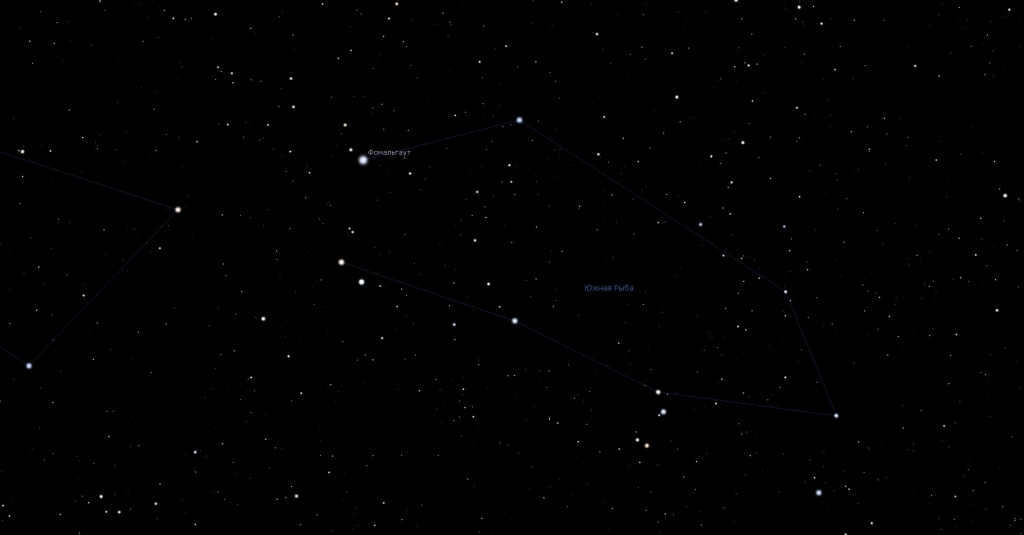
Position of Fomalgaut in the heavens
Fomalgaut, a member of the brightest stars in the nocturnal sky, is situated in close proximity to our planet Earth, only 25 light years away. Fomalgaut serves as the primary star of the South Fish constellation, earning it the nickname Alpha of South Fish.
Overview
Resources related to the subject
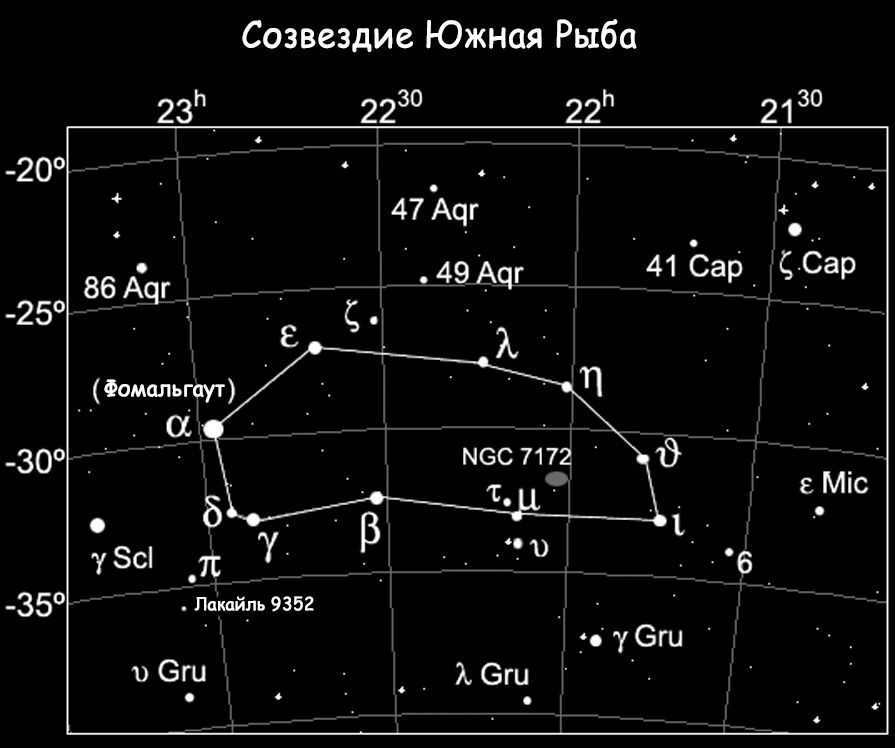
Based on current astronomical information, Fomalgaut holds the 18th position among the most luminous stars visible in the nighttime sky. Thanks to its relatively low stellar magnitude (1.16V), this celestial object is easily observable from Earth without the aid of any optical instruments.
Because of its brilliance, ancient civilizations in the southern regions of the Northern Hemisphere were able to spot this celestial object. The people of modern-day China, India, Iran, and other countries observed Fomalgaut. Historical evidence even confirms that Fomalgaut played a significant role in numerous ritual ceremonies performed by the inhabitants of these territories in ancient times.
Given that Fomalgaut is situated in the constellation South Fish and was initially observed in Asia, it comes as no surprise that this star is named “fum al-ḥūt” in Arabic, which translates to “mouth of the fish” or “mouth of the whale” in Russian.
Star’s Physical Characteristics and Age
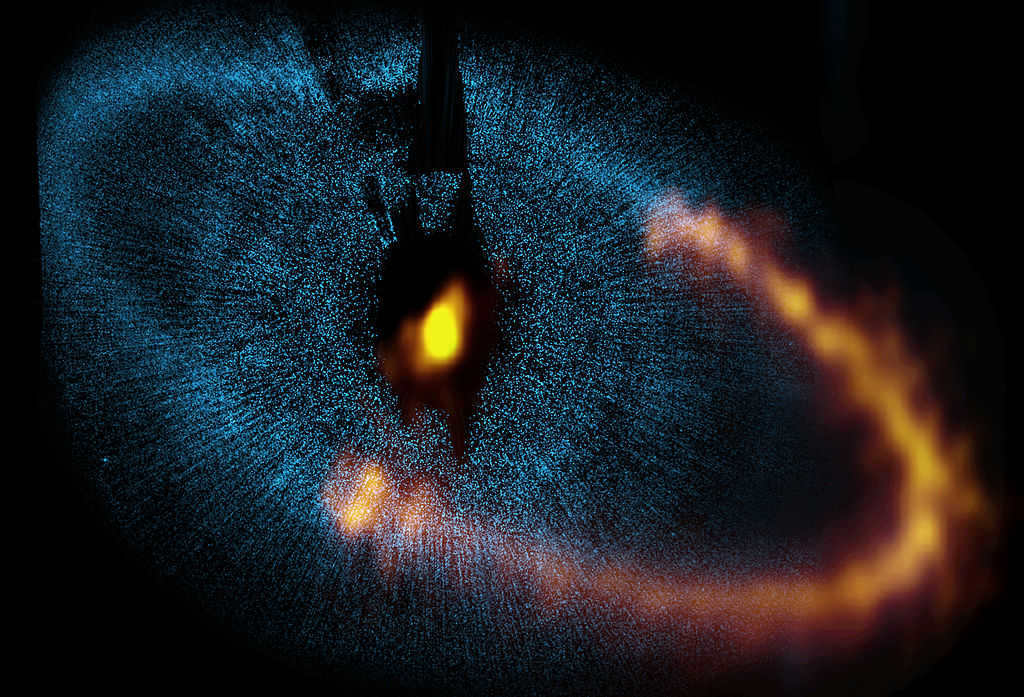

A fascinating dust ring encircles the dazzling Fomalgaut star, as captured by the ALMA radio telescope.
Due to its relatively close proximity to Earth, only 25 light years away, the star Fomalgaut can be meticulously observed using a wide range of astronomical instruments. These instruments have revealed that Fomalgaut is classified as a young star, with an age of approximately 250 million years. In contrast, our very own Sun is a staggering 4.57 billion years old, making it 18 times older than the Fomalgaut star!
Present investigations
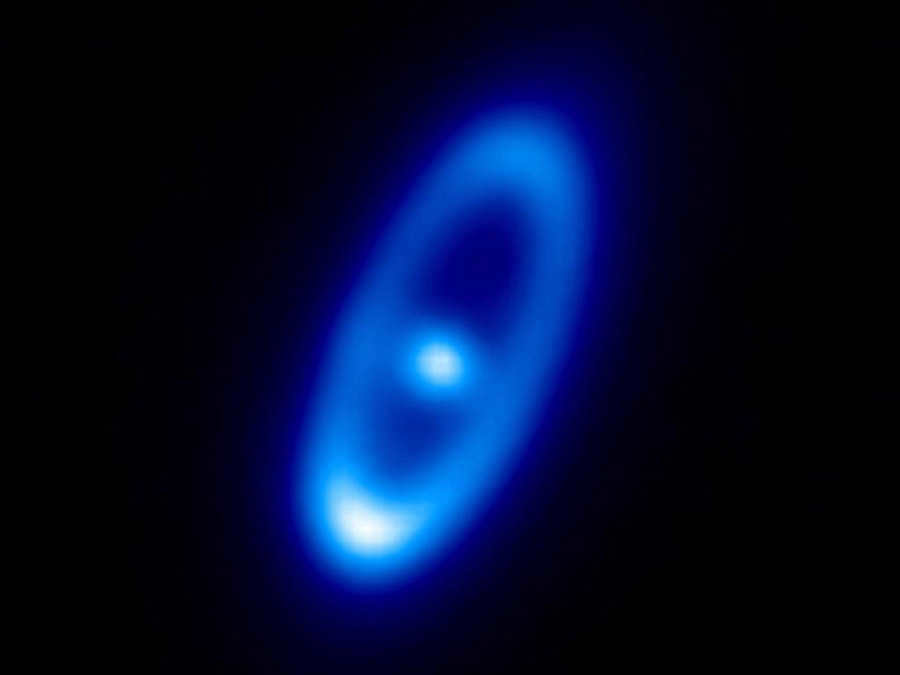
The star known as Fomalgaut has been a subject of human observation for thousands of years, but it is only in the past century that significant scientific research has been conducted on this celestial body. The first substantial data on Fomalgaut was gathered by the Hubble Space Telescope, which was launched into Earth’s orbit in 1990.
By analyzing the images captured by the Hubble telescope, scientists discovered a protoplanetary disk surrounding the Fomalgaut star system in 1998. This disk is primarily composed of protoplanetary material, which could potentially form planets in the future. It encircles the Fomalgaut star and emits a significant amount of infrared radiation.
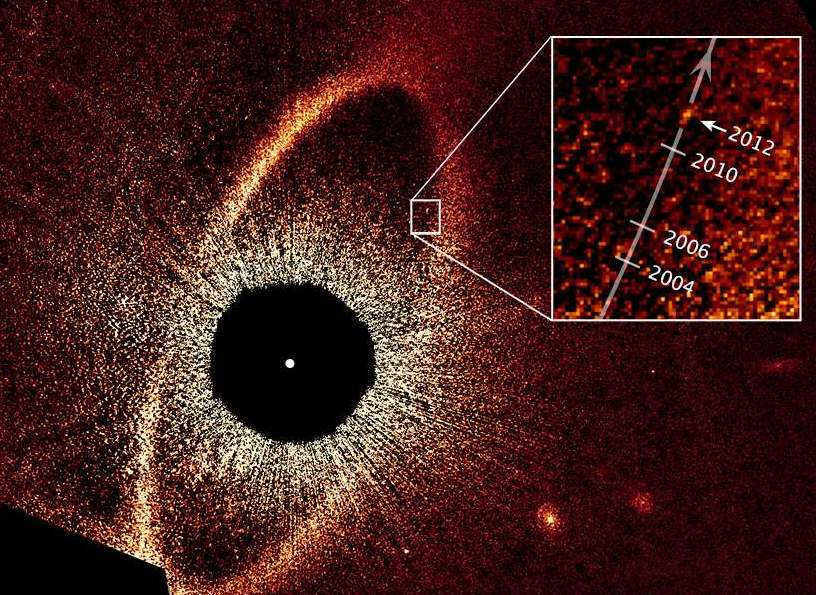
However, back in 2008, using the Hubble telescope once again, astronomers made a groundbreaking discovery within the protoplanetary disk surrounding the Fomalgaut star. They named this newfound planet Fomalgaut b. Subsequent observations have unveiled the possibility of other planets existing in the Fomalgaut system as well. In 2011, scientists at the Atacama Large Millimeter Array in Chile confirmed the presence of yet another planet, Fomalgaut c, within this star’s system.
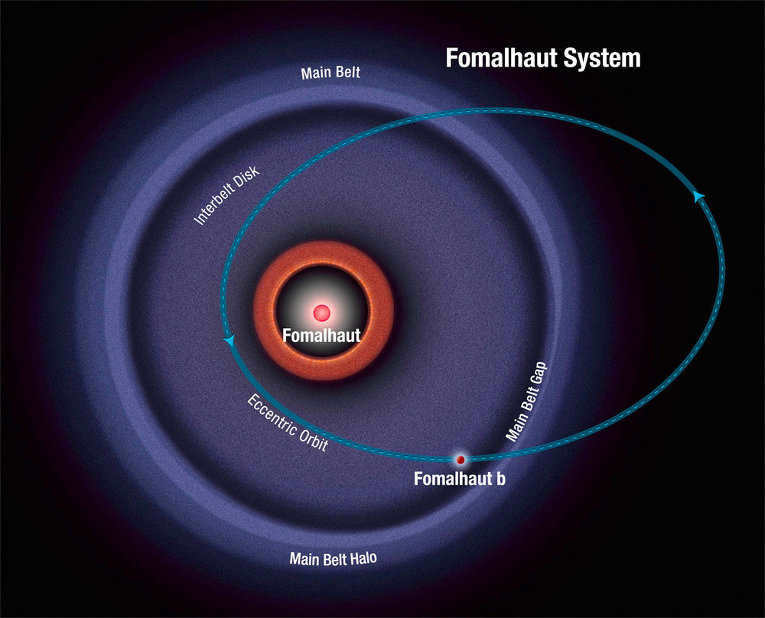
The orbit of the planet Fomalgaut b
At this moment, scientists have ample evidence to suggest that there is an additional planet within the Fomalgaut system – Fomalgaut d. However, the astronomical community has not yet made an official announcement regarding the existence of this planet. Nevertheless, the astronomical community has not yet made an official announcement regarding the existence of this planet.
Fomalgaut, a star belonging to the Castor group, is part of a cluster of stars that share both a common affinity and a shared path through space. Alongside Fomalgaut, this group includes other well-known celestial luminaries such as Vega, Alderamin, Castor, Alpha Libra, and many others.
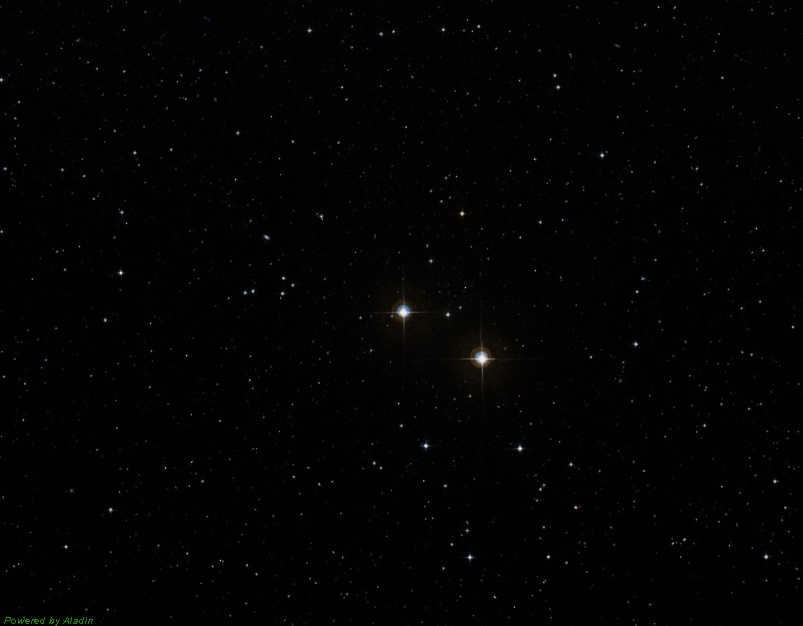
The star Fomalgaut has a counterpart known as TW of South Pisces. TW of South Pisces is an orange dwarf star, smaller in size (about 5 times smaller) than Fomalgaut. It is located just one light-year away from Fomalgaut and shares the same direction of movement in space. Recent studies indicate that TW of South Pisces is approximately the same age as Fomalgaut. This similarity in age has led many scientists to refer to these stars as “sisters,” suggesting a possible shared origin.
Compilation of the most brilliant celestial bodies
| 0 | Sol | 0.0000158 | -26.72 | 4.8 | G2V | North |
| 1 | Sirius (α Canis Majoris) | 8.6 | -1.46 | 1.4 | A1Vm | Southern |
| 2 | Canopus (α Carinae) | 310 | -0.72 | -5.53 | A9II | South |
| 3 | Alpha Centauri (α Centauri) | 4.3 | -0.27 | 4.06 | G2V+K1V | South |
| 4 | Arcturus (α Boötis) | 34 | -0.04 | -0.3 | K1.5IIIp | North |
| 5 | Vega (α Lyrae) | 25 | 0.03 (perm) | 0.6 | A0Va | North |
| 6 | Capella (α Aurigae) | 41 | 0.08 | -0.5 | G6III + G2III | North |
| 7 | Rigel (β Orionis) | ~870 | 0.12 (perm) | -7 | B8Iae | South |
| 8 | Procyon (α Canis Minoris) | 11.4 | 0.38 | 2.6 | F5IV-V | North |
| 9 | Achernar (α Eridani) | 69 | 0.46 | -1.3 | B3Vnp | South |
| 10 | Betelgeuse (α Orionis) | ~530 | 0.50 (perm) | -5.14 | M2Iab | North |
| 11 | Hadar (β Centauri) | ~400 | 0.61 (perm) | -4.4 | B1III | South |
| 12 | Altair (α Aquilae) | 16 | 0.77 | 2.3 | A7Vn | North |
| 13 | Acrux (α Crucis) | ~330 | 0.79 | -4.6 | B0.5Iv + B1Vn | South |
| 14 | Aldebaran (α Tauri) | 60 | 0.85 (rem) | -0.3 | K5III | North |
| 15 | Antares (α Scorpii) | ~610 | 0.96 (perm) | -5.2 | M1.5Iab | South |
| 16 | Spica (α Virginis) | 250 | 0.98 (perm) | -3.2 | B1V | Southern |
| 17 | Pollux (β Geminorum) | 40 | 1.14 | 0.7 | K0IIIb | Northern |
| 18 | Fomalhaut (α Piscis Austrini) | 22 | 1.16 | 2.0 | A3Va | Southern |
| 19 | Mimosa (β Crucis) | ~290 | 1.25 (perm) | -4.7 | B0.5III | Southern |
| 20 | Deneb (α Cygni) | ~1550 | 1.25 | -7.2 | A2Ia | Northern |
| 21 | Regulus (α Leonis) | 69 | 1.35 | -0.3 | B7Vn | Northern |
| 22 | Adhara (ε Canis Majoris) | ~400 | 1.50 | -4.8 | B2II | South |
| 23 | Castor (α Geminorum) | 49 | 1.57 | 0.5 | A1V + A2V | Northern |
| 24 | Gacrux (γ Crucis) | 120 | 1.63 (perm) | -1.2 | M3.5III | South |
| 25 | Shaula (λ Scorpii) | 330 | 1.63 (perm) | -3.5 | B1.5IV | Southern |
This blog post was published on December 31st, 2014
Written by Maxim Zabolotsky

The constellation South Pisces is situated in the southern hemisphere of the celestial sphere. It consists of 43 stars that are visible to the naked eye.
Fascinating details
The most luminous star in the South Pisces constellation is Fomalgaut, with an apparent magnitude of 1.17. The other stars in the constellation are considerably dimmer. Interestingly, at latitudes around 50°, this star is rarely seen in conjunction with Sirius in the sky. As one of these celestial bodies ascends, the other has already descended below the horizon.
Where is it located?
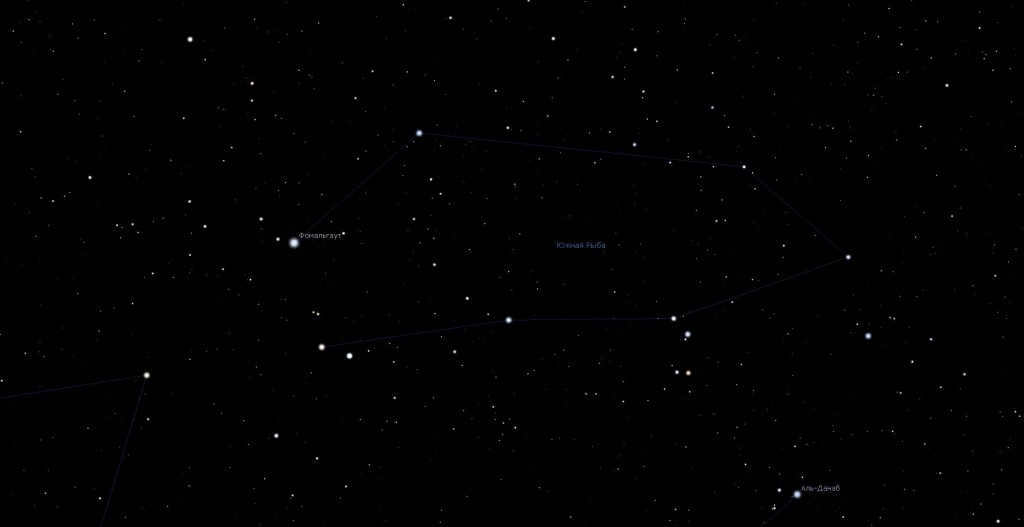
The constellation South Fish can be seen in the Stellarium planetarium program.
Aquarius, Sculptor, Capricorn, Microscope, and Crane are the neighboring constellations of South Fish. The brightest star in South Fish can be found by locating the Big Square in Pegasus and following the line connecting the alpha and beta stars of this asterism towards the south. Above the horizon, you will notice a bright star called Fomalgaut. South Fish is best observed at latitudes below 53° and the ideal months for observation are September-October.

Fomalgaut, image from the DSS catalog
Fomalhaut, a star in the constellation, is a triple system located 25 light-years away from Earth. The star has two companion stars, an orange dwarf and a red dwarf. Fomalhaut is the only star of its magnitude visible in the Southern Hemisphere. In terms of size, Fomalhaut is only 2.3 times more massive than the Sun, but it shines 16 times brighter. It has a surface temperature of about 8500 K. Surrounding the star, there is a protoplanetary belt and an exoplanet with a mass three times greater than Jupiter. Scientists believe that there may be other objects in the Fomalhaut system as well.
Additional items within the arrangement
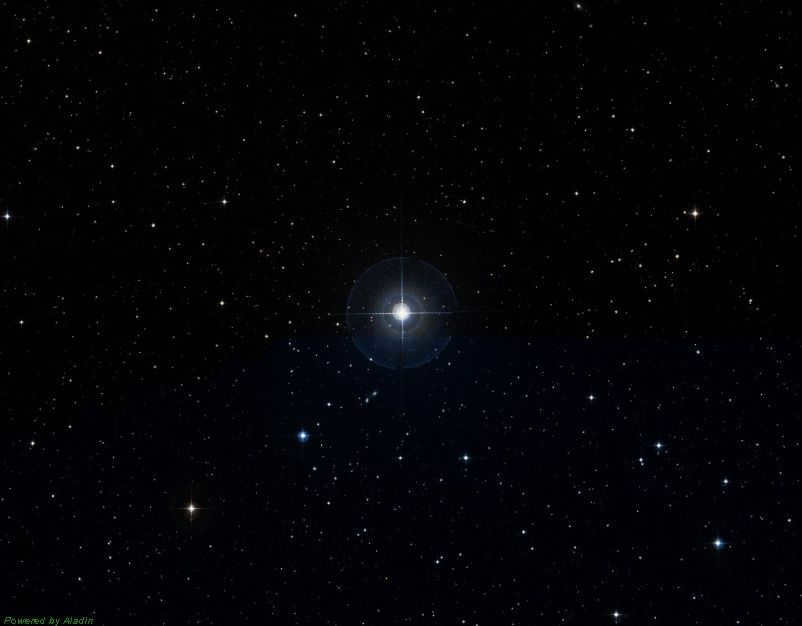
The star known as Epsilon of South Pisces possesses an apparent magnitude of 4.18. This particular celestial body is situated approximately 744 light-years distant from our planet. In terms of mass, it is approximately 4.1 times that of our Sun. The other luminous entities within the South Pisces constellation are even less radiant. It is worth noting that this constellation lacks prominent nebulae and clusters that can be easily observed using amateur optical instruments. Even the spiral galaxy NGC 7314, which can be found within this area, necessitates the use of a telescope with a minimum aperture of 200 mm in order to properly observe it.
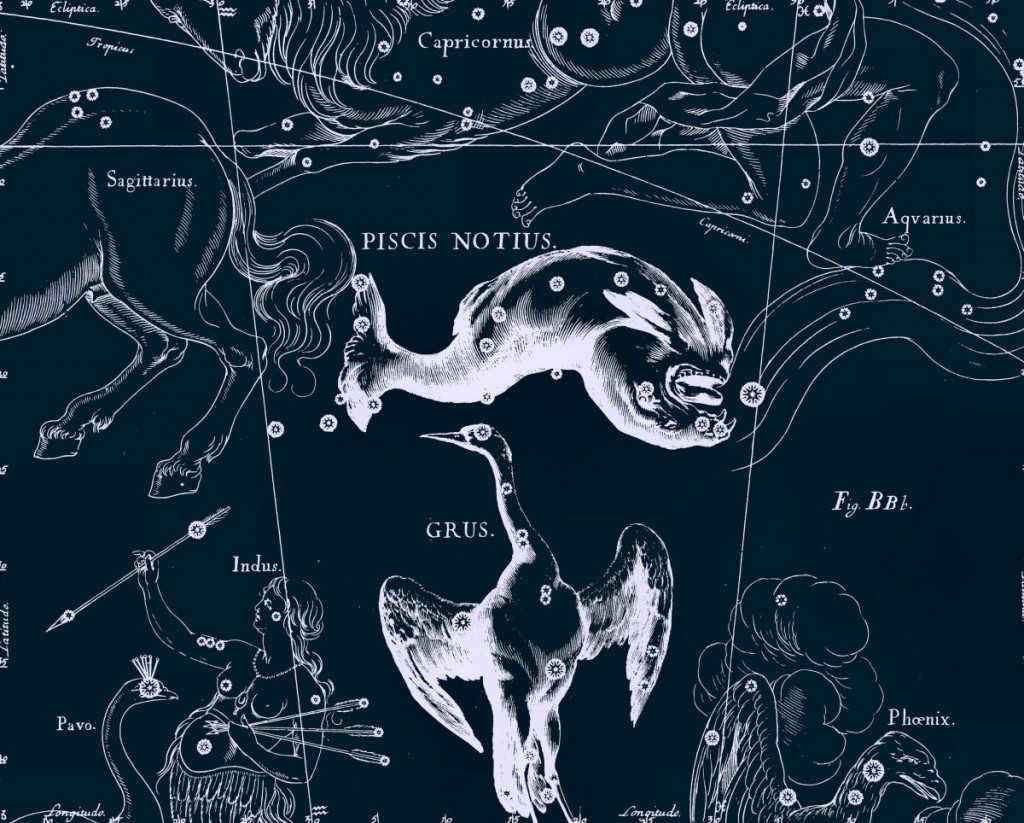
Jan Hevelius depicted the South Fish in his atlas of constellations.
This constellation, known as the South Fish, has a long history in terrestrial astronomy and its shape resembles that of a fish. It was included in Ptolemy’s list of celestial formations in the 2nd century, although it had more stars at that time. In the 16th and 17th centuries, Peter Plancius identified the Microscope and Crane constellations, resulting in a reduction in the size of the South Fish and giving it its present-day appearance.
The South Fish, also known as Piscis Austrinus in Latin, can be found in the southern sky.
First documented in Ptolemy’s celestial atlas during the second century, the origins of this constellation can be traced back to ancient Babylon. Originally referred to as Piscis Notius, it was later redefined as Crane by Dutch astronomer Peter Plancius in the late 16th century.
South Fish is a relatively small and dim constellation, featuring only one star that surpasses magnitude 4. The most prominent star within this constellation is Fomalgaut, which holds the distinction of being the brightest in the night sky.
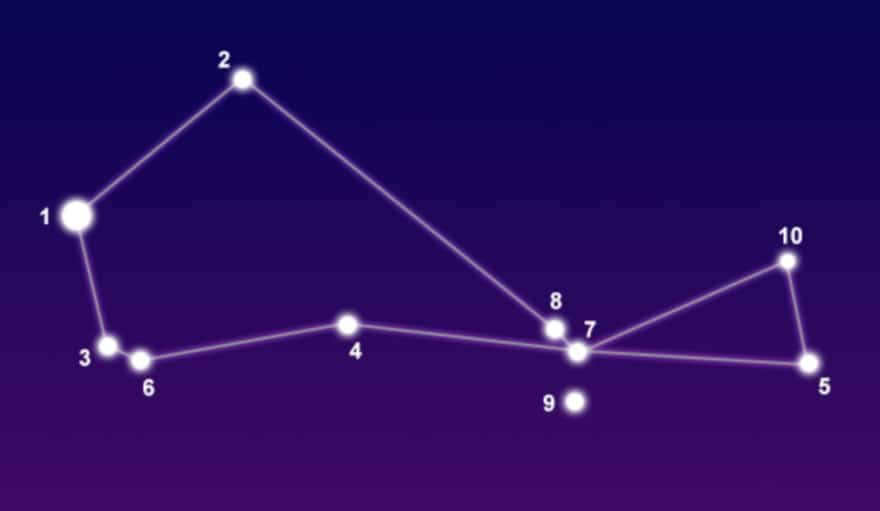
Facts, location, and map
The constellation South Fish covers an area of 245 square degrees, making it the 60th largest constellation. It is situated in the fourth quadrant of the southern hemisphere (SQ4) and can be observed at latitudes ranging from +55° to -90°. South Fish is bordered by Aquarius, Capricorn, Crane, Microscope, and Sculptor.
This constellation is home to three stars with orbiting planets, but it does not contain any Messier objects or meteor streams. The brightest star in South Fish is Fomalgaut, which has an apparent visual magnitude of 1.16. It is part of the Celestial Waters group, which also includes Dolphin, Eridanus, Sails, Compass, Corma, Lesser Horse, Dove, and Kiel. To get a better understanding of the South Fish constellation, refer to the star map diagram.
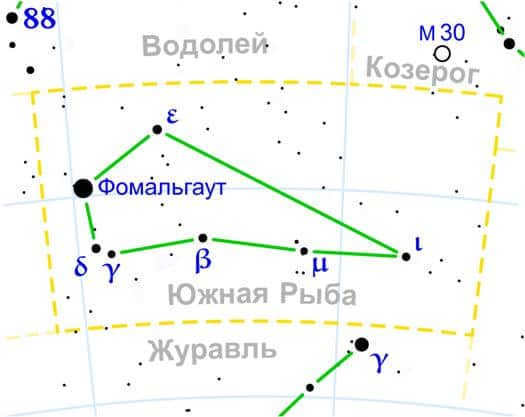
Legend
During the ancient times, this particular constellation was identified and cataloged by Ptolemy in the 2nd century. Originally, it was believed to encompass the stars that now make up the constellation Crane. In the ancient city of Babylon, this constellation was referred to as the fish MUL.KU and was strongly associated with the Syrian goddess of fertility, Atargatis. According to the myth, Atargatis fell into a lake located near the Euphrates River in northern Syria and was saved by a large fish. However, she was eventually consumed by the fish as a punishment for some unknown transgression. Interestingly, the priests were permitted to eat fish on a daily basis without any consequence.
The Great Fish, with the Greeks, was the one who quenched his thirst with the water of Aquarius. The two fish shown here are his offspring. It was also said that Aphrodite, the goddess, once turned herself into a fish to elude Typhon. Along with her son Eros, they plunged into the Euphrates River, and two fish came to their rescue. The Egyptians held the belief that the fish which saved Isis was immortalized in the sky.
Notable celestial bodies
Discover the prominent celestial bodies within the South Fish constellation in the southern hemisphere, complete with detailed explanations, captivating photographs, and comprehensive analysis.
Fomalgaut, also known as Alpha of South Fish, stands out as a white main-sequence star (A3 V) boasting an apparent visual magnitude of 1.16. This makes it the brightest star in the constellation and the 18th brightest in the entire sky. Located at a distance of 25.13 light-years, Fomalgaut surpasses our Sun in mass by 1.92 times, in radius by 1.482 times, and in brightness by 16.63 times. Its remarkable production of infrared radiation suggests the presence of a circumstellar disk, which is further confirmed by the existence of multiple debris disks.
Fomalgaut is part of the Castor moving group, a cluster of stars that share a common motion and are believed to have originated from the same location. Additionally, Fomalgaut is the third brightest star in the group and is accompanied by a nearby rotating object, second only to Pollux and our Sun.
In 2008, an exoplanet called Fomalgaut b was discovered orbiting a star. This exoplanet is visible at certain wavelengths and has an orbital period of 2000 years.
The name Fomalgaut is derived from the Arabic phrase fum al-ḥawt, which means “mouth of the (Southern) fish”. This star was significant in ancient times, marking the solstice in 2500 BC. It was initially associated with the constellations South Fish and Aquarius, but later classified as part of the first constellation. In 1725, it was given the designations 79 Aquarius and 24 South Pisces.
Fomalgaut is part of a binary system with the TW star in South Pisces.
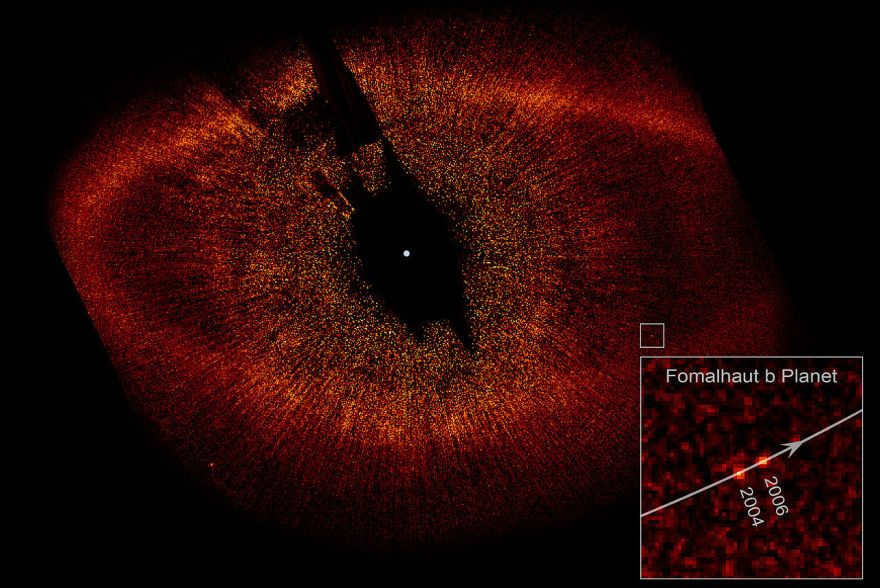

The Fomalgaut coronograph showcases the circle and position of the potential exoplanet Fomalgaut b.
TW South Pisces (Fomalgaut B) is an orange dwarf (K5Vp) with an average apparent magnitude of 6.48 and a distance of 24.9 light-years. It is considered a companion of Fomalgaut. It is a BY Dragon variable – a flaring star with fluctuations in brightness of 6.44-6.49 over 10.3 days. It reaches 0.725 solar mass, 0.629 radius, and 19% brightness.
Epsilon of South Fish is a blue-white main-sequence dwarf (B8V) with an apparent visual magnitude of 4.18 (second brightest). It is located 744 light-years away.
South Fish Delta is a star system known as G8III. It has a brightness level of 4.20 and is located 170 light-years away. This star system is considered the third brightest in the constellation. The primary star in South Fish Delta is a yellow giant.
Beta of South Pisces is another star system, marked as A1V. It has an apparent visual magnitude of 4.29 and is situated 148 light years away. This star system consists of a main-sequence white dwarf and is ranked as the fourth brightest in the constellation.
Iota of South Fish is a subgiant star classified as B9.5V. It has a visual magnitude of 4.35 and is located 205 light-years away.
Gamma of South Fish is a multi-star system represented by A0III. It has an apparent visual magnitude of 4.46 and is situated 222 light years away. The brightest object in this system is a white giant, with a brightness 81 times greater than that of the Sun.
Mu of South Fish is a main-sequence white star (A2V) with a visual magnitude of 4.50. It is located 130 light-years away.
The South Fish Theta is a system of multiple stars with an apparent visual magnitude that reaches 5.02. It is situated 339 light-years away. The primary component is a white dwarf (A1V).
The South Fish Pi is a double star observed spectroscopically, with an orbital period of 178.3177 days. Its apparent visual magnitude is 5.12 and it is located 93 light-years away.
This South Pisces is a system of multiple stars with an apparent visual magnitude of 5.43 and a distance of 1012 light-years. The main object is a blue-white subgiant (B8).
Lacaille 9352 is a red dwarf (M0.5V) with an apparent visual magnitude of 7.34 and a distance of 10.68 light-years (the closest star system to the Sun). It has half the mass and 0.459 radius of the Sun. The star is too dim to be seen with the naked eye.
Moving at a rate of 6.9 arc seconds per year, this red dwarf was the first of its kind to have its angular diameter measured.
HD 216770, an orange main-sequence dwarf (K1V), has a visual magnitude of 8.10 and is located 123.5 light-years away. It is less bright and cooler than the Sun.
In 2003, a planet with 65% of Jupiter’s mass was discovered in orbit around HD 216770. It takes 118.45 days to complete one orbit. There may also be a smaller planet nearby with a rotation period of 12.456 days, but its existence has not been confirmed.
S of South Pisces is a red giant (M3e-M5IIe) that experiences visibility variations ranging from 8.0 to 14.5 over a period of 271.1 days. It is classified as a long-term Mira variable, meaning it is a pulsating variable star.
V of South Fish is a semi-regular variable star that exhibits brightness variations between 8.0 and 9.0 over a period of 148 days.
Celestial bodies
NGC 7173 is an elliptical galaxy that has a visible brightness of 11.9 and is located at a distance of 114.8 million light-years. It was first discovered by John Herschel on September 25, 1834.
NGC 7173, along with NGC 7174 and NGC 7176, form a collection of interacting galaxies known as the Hickson Compact Group. Eventually, these three galaxies will combine into one. The group is situated 100 million light-years away.
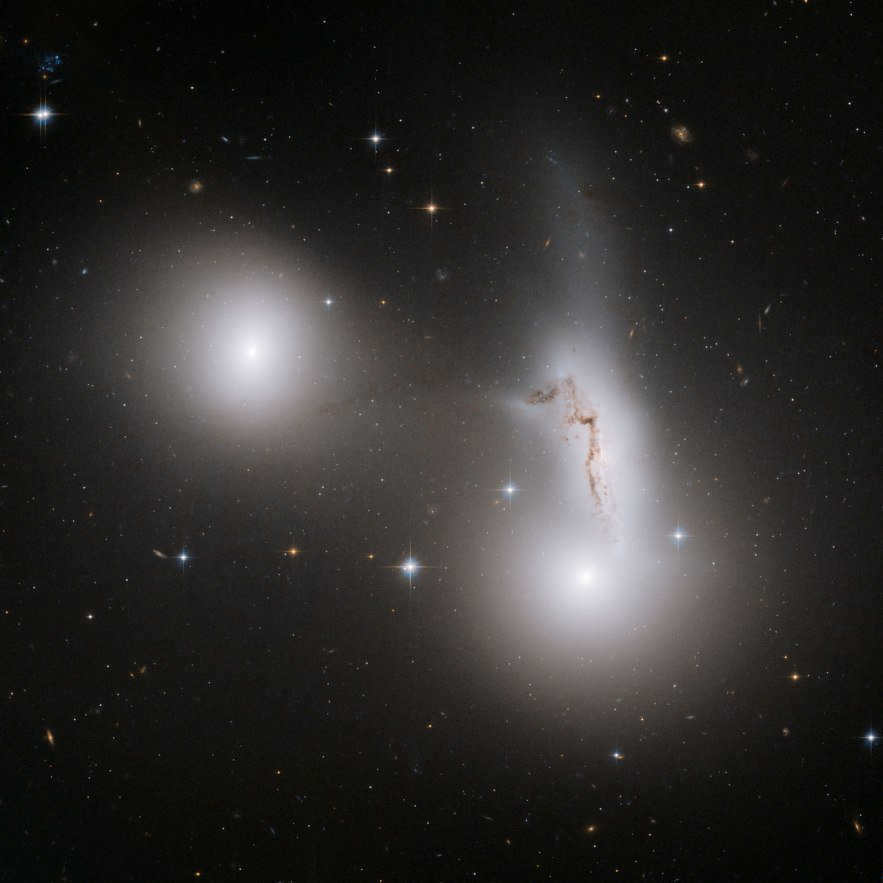
NGC 7174 is a spiral galaxy that has a visual magnitude of 12.5. It was first observed by John Herschel on September 28, 1834.
NGC 7176, on the other hand, is an elliptical galaxy with a visual magnitude of 11.5 and is located at a distance of 115.5 million light-years. It belongs to the Hickson Compact Group and was also discovered by John Herschel, but on September 23, 1834.
As for NGC 7314, it is a spiral galaxy that has an apparent visual magnitude of 11.9, making it observable through a small telescope. Additionally, it is classified as a Seyfertian (active) galaxy.
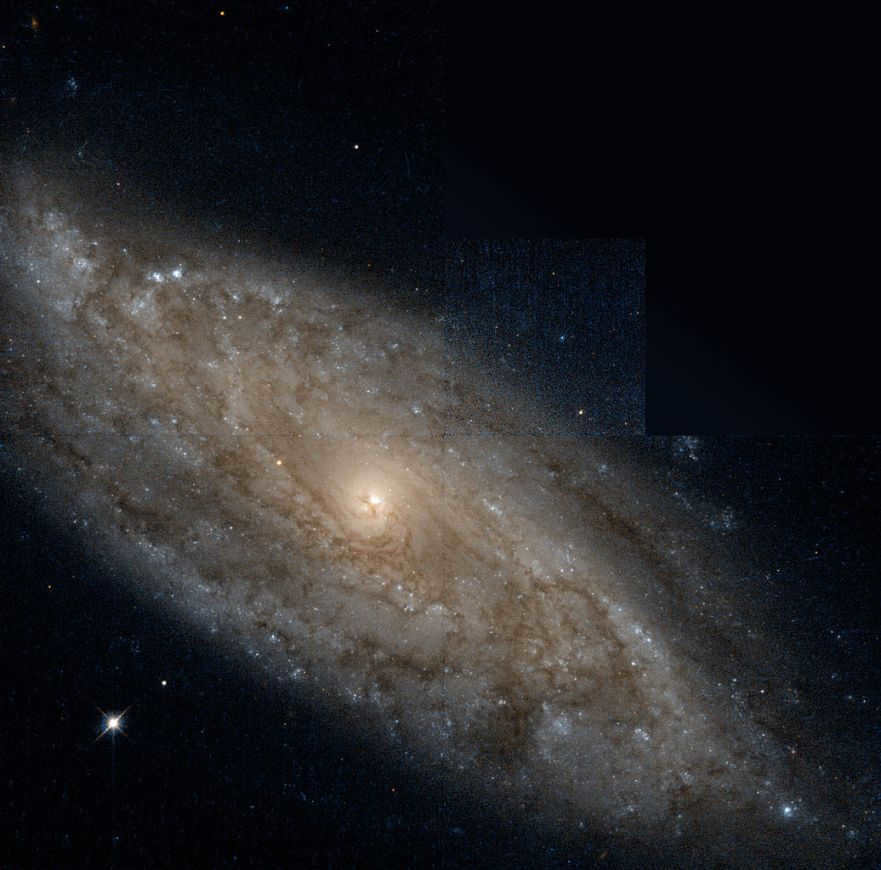
NGC 7172 is a spiral galaxy that has a visible brightness of 11.9. It belongs to the Seyfert type II galaxy classification.
If you want to explore the South Fish constellation in the southern hemisphere in more detail, you can utilize not only our photographs but also 3D models and an online telescope. To aid in your own search, a star map will be helpful.
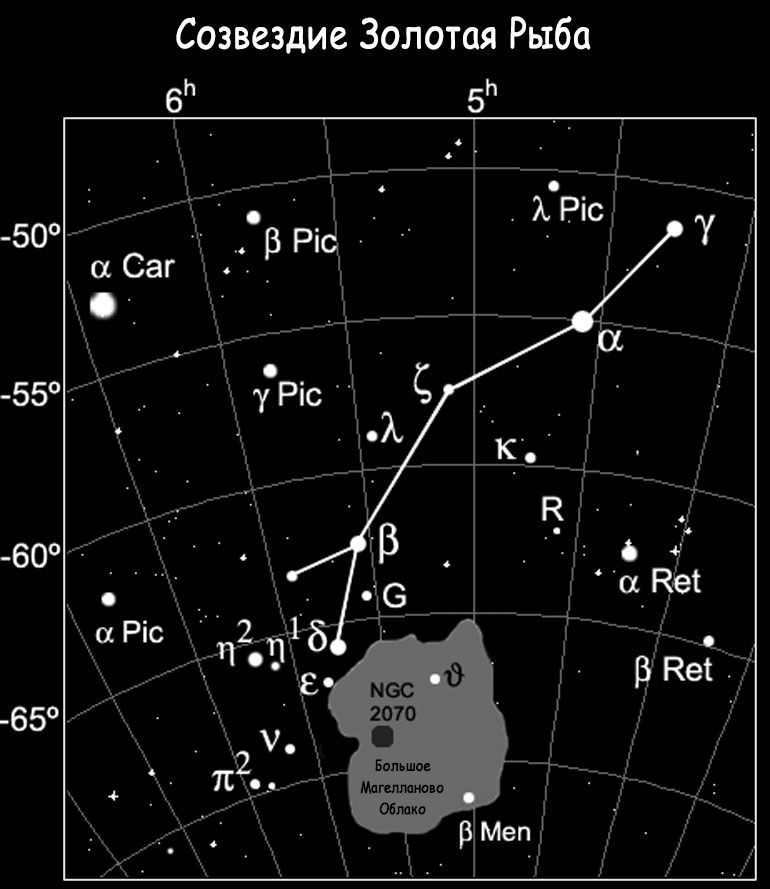
The constellation Goldfish is quite tiny. It covers only 179 square degrees, which makes it the 72nd smallest constellation among the 88 available ones.
Possibly the primary constellation in the southern region
In this limited portion of the night sky, an observer can spot around 20 stars with the unaided eye, and only three of them are brighter than the fourth magnitude.
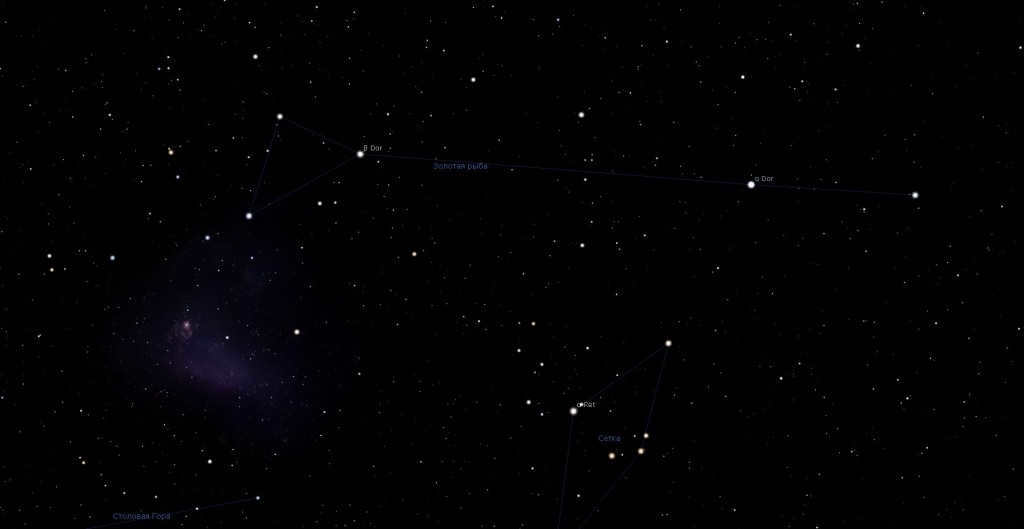
The constellation known as Goldfish can be seen in the Stellarium planetarium program.
Goldfish, despite its apparent unassuming nature, is actually a significant constellation in the Southern Hemisphere. This is because it is home to the South Pole of the celestial ecliptic. Additionally, Goldfish has numerous fascinating neighboring constellations, including Cutter, Grid, Clock, Southern Hydra, Table Mountain, Painter, and even a similar-sounding constellation called Flying Fish.
The brightest stars are
Alpha Star
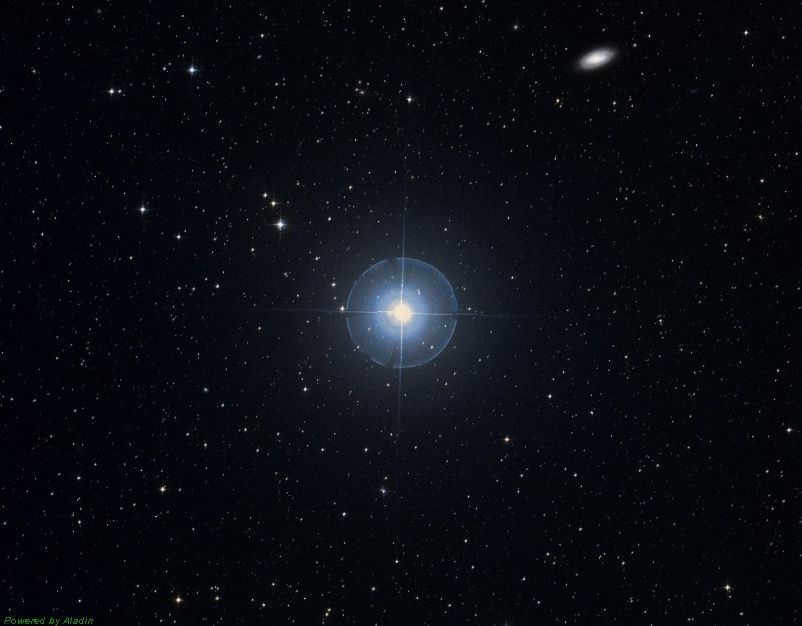
Picture of the bright star α in the Goldfish constellation. Take note of the fortunate galaxy captured in the photo, situated above and to the right of the star itself.
Within the constellation of Goldfish, the leading star in terms of stellar brilliance is its alpha star. This radiance is attributed to the double stars of variable magnitude, similar to the alpha star in the Hound Dog constellation. The apparent magnitude of this star is 3.30m, and it is approximately 176 light-years away from Earth. The primary component is a blue-white giant with a high silicon content, with a bluish subgiant star orbiting around it.
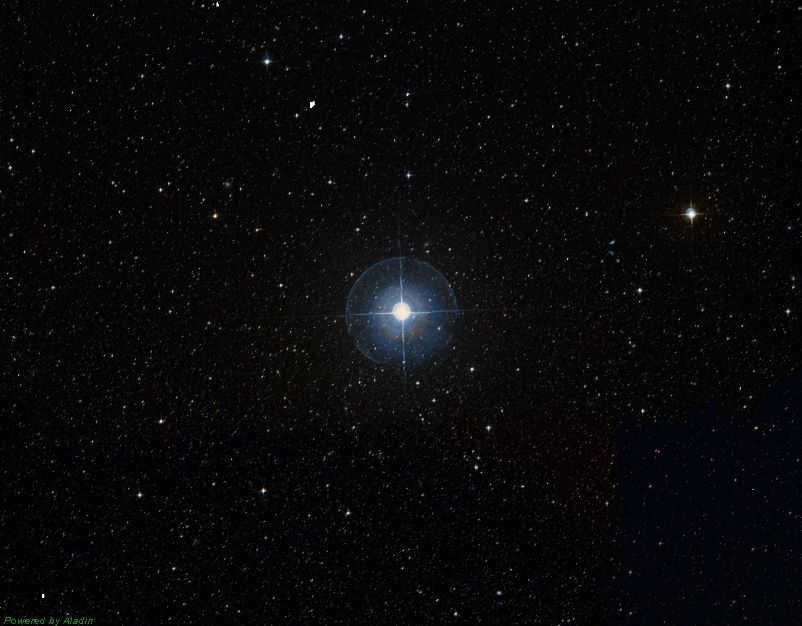
A little further away, precisely 1038 light years from our location, we can observe another prominent celestial body – Beta of the constellation Goldfish. This particular luminary has a visible luminosity of 3.76m. It is known to be a pulsating variable star and falls under the category of Cepheid type. Interestingly, its color spectrum undergoes a transformation from white to yellow.
Gamma Goldfish
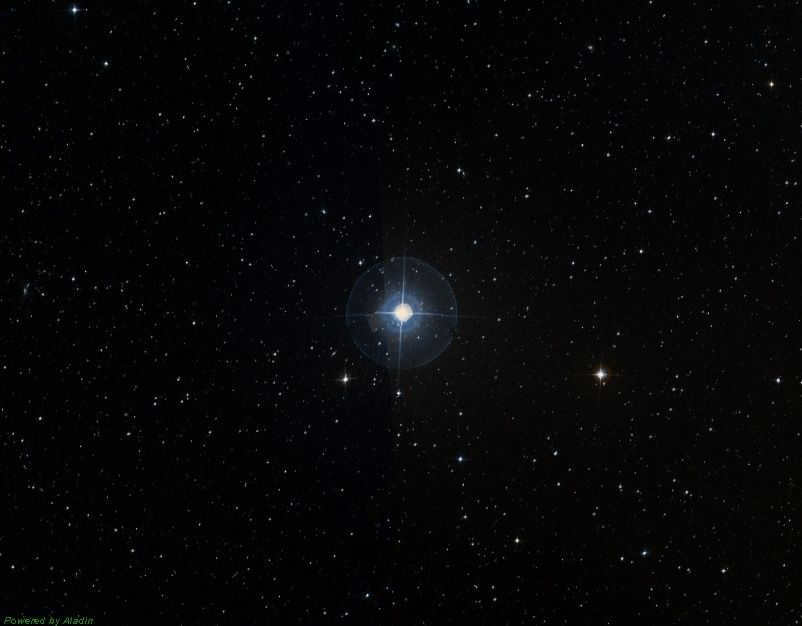
Despite being the third brightest, the gamma Goldfish is the most intriguing among the three most luminous stars. It is relatively close to Earth, with only 66 light-years separating us. This F5 spectral class giant is slightly larger and more luminous than the Sun. However, its unique brightness, which varies by only a fraction of a star magnitude, sets it apart. This makes it fall into the category of less massive Cepheids, which are known for their distinct pulsation mechanism.
The Great Magellanic Cloud
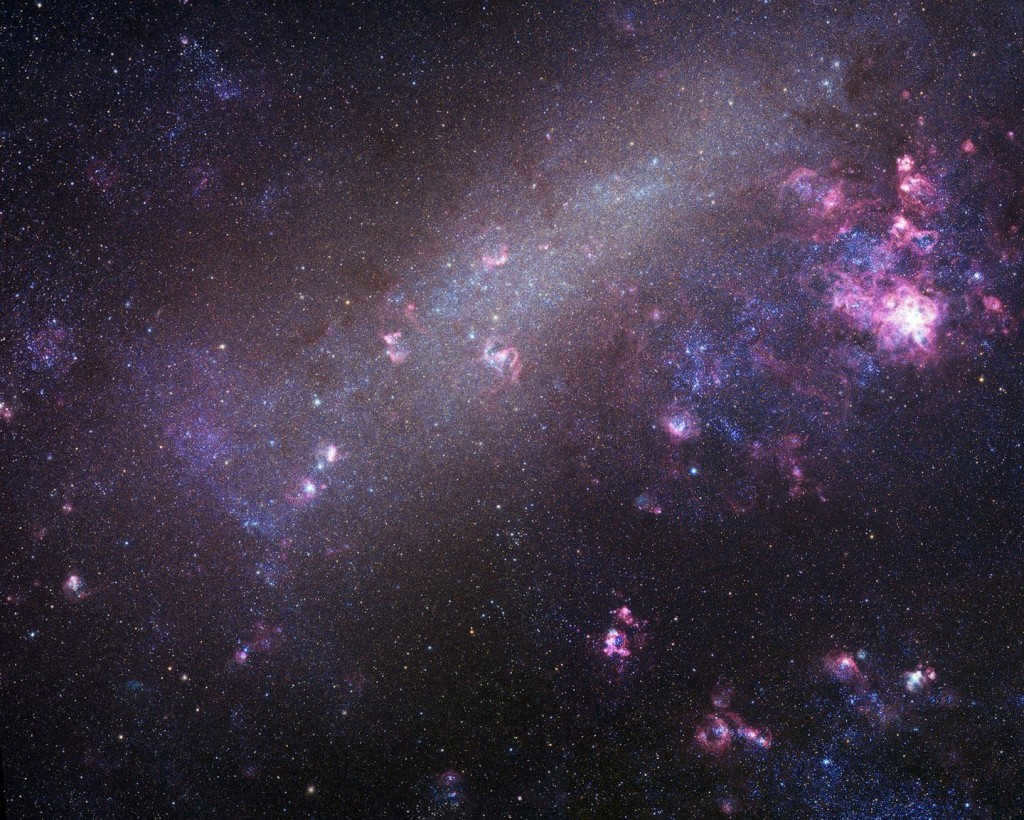
Here is a photograph showcasing the Large Magellanic Cloud.
Within this particular constellation, you will find the predominant satellite of our Galaxy known as the Large Magellanic Cloud. This galaxy, characterized by its dwarf size and irregular shape, presents itself to us as a faint cloud positioned at the border of two celestial objects – the Goldfish constellation and its neighboring Table Mountain. The distance from Earth to this companion of the Milky Way is approximately 170,000 light years. Despite being a dwarf galaxy, the Large Magellanic Cloud contains a concentration of around 400 planetary nebulae, 700 star clusters, and thousands of diverse large stars, ranging from giants to supergiants.
The Tarantula Nebula
This galaxy is home to another fascinating object – the Tarantula Nebula. Known as NGC 2070, this emission nebula is a sight to behold.
Take a look at our gallery of images showcasing this incredible nebula:
The Tarantula Nebula has a visible magnitude of 8, which once led astronomers to mistake it for a star. However, situated 180 thousand light-years away, NGC 2070 is a remarkable celestial object that bears no resemblance to a star. It is a hub of intense star formation, making it the most active site in the entire Local Group of galaxies. One notable result of this activity is the formation of the Goldfish cluster, also known as NGC 2074, within the Tarantula Nebula.
A brief overview of the past
